CINCINNATI — Cranes are returning several 4-foot-tall finials to the roof line of Music Hall, one of the final elements of the iconic building to be restored to its original Hannaford design.
Tuesday, a crane lifted a restored lyre onto the datestone on the front of the building, its three spikes finally restored after decades of deterioration. Other finials were lost over the years due to weather and other damage, including one to the left of the rose window. They've been gone so long, many of us wouldn't even know they existed.
"You probably didn’t know they were missing, but when they’re all back, you will know that they were important and they need to be there," said Thea Tjepkema, preservationist for Friends of Music Hall, which funded the restoration. "The whole roof line of Music Hall is naked."
Music Hall was built in 1878, and is home to the Cincinnati Symphony Orchestra, Cincinnati Pops, Cincinnati Opera, Cincinnati Ballet and the May Festival.
Tjepkema noticed the missing finials while doing research for guided tours around the outside of the building, then traced their disappearances by looking at photos dating back to the 1880s.
"[Samuel] Hannaford designed Music Hall to call people inside," Tjepkema said. "These are really important Gothic cathedral details that help complete high Victorian Gothic architecture, and if these are not along the roof, you’re missing this upward lift, this feeling of lightness, to this massive structure."
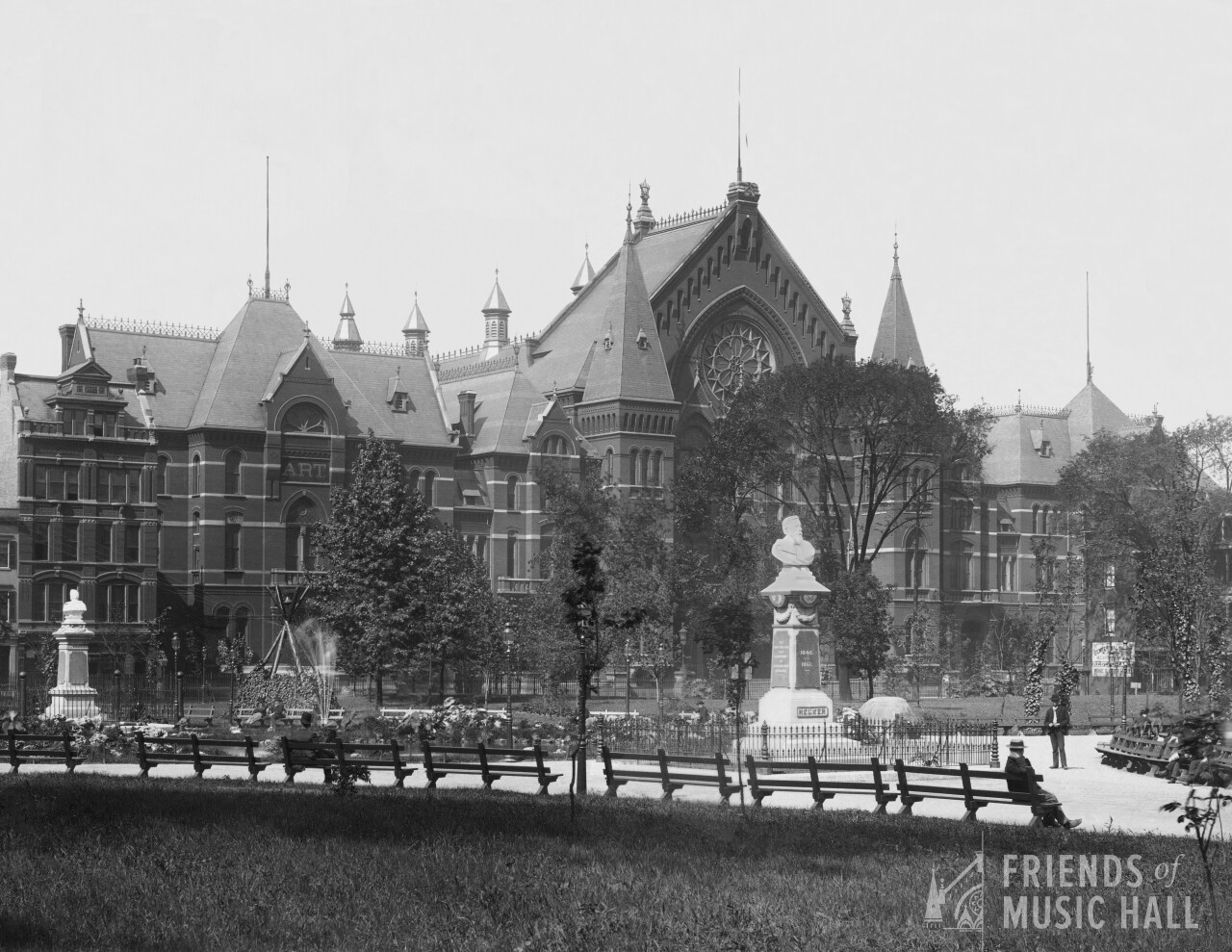
Tjepkema said finials were originally atop every gable. She and the Friends of Music Hall decided the finials should be the next project in the National Historic Landmark's restoration.
The group hired EverGreene Architectural Arts of Brooklyn to draft concept drawings and Cincinnati architect Ken Jones was brought in to oversee the project. It required approval by Ohio’s State Historic Preservation Office and the National Park Service.
Leading locally
After that, it was a local effort to get the finials back to the gables.
Cincinnati-based Structural Systems Repair Group (SSRG) dismantled the sandstone finials and fragments that remained, then cleaned those pieces to be restored and used for color-matching.
ExactMetrology, in Blue Ash, created high-definition 3-D scans of the ornamentation. The scans were so detailed, they showed the original chisel marks. From there, West End-based Arya Design created new 3-D designs and milled finial models out of wood.
"We were able to overlay the scan on top of the actual drawings. We could say, 'Oh, this is wrong,'" said Chris Rose, owner of Arya Design. "We were able to redraw on top of the original scan what could be modeled and made, and that slowly turns into the process of taking the drawings and see what actually fits."
WCPO was allowed access to the project at that point in the work.
Respecting tradition
There's jazz music coming from the nondescript warehouse on York Street in the West End. The doors were open to let in warm May air.
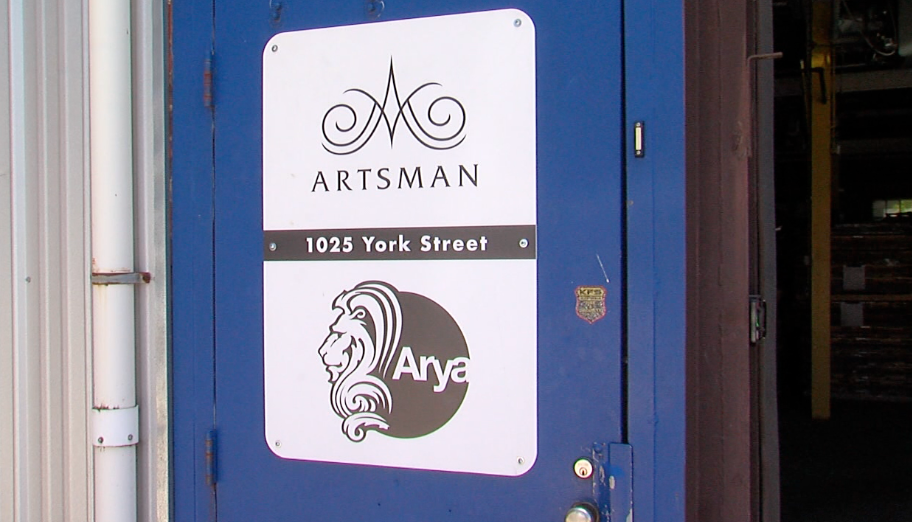
"Something with a lot of good rhythm and beats to it," laughs sculptor Jamie Payne when we ask about the soundtrack. "Something that can kind of go into the background and allow you to find a good work rhythm."
When you're working on a project for Music Hall, the music is important.
"I'm really happy working on this project," he said. "It's something that will kind of be a legacy for my family."
Payne's been interested in sculpting since he was a kid. And he's got a respect for tradition.
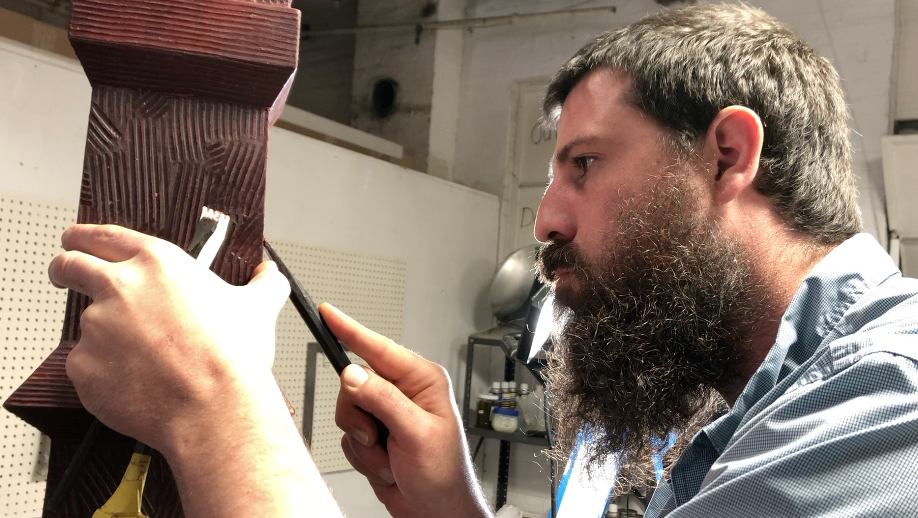
The process of building new finials is tedious, by design -- there's no 3-D printing these things.
"There is no print button and it's done," he said. "The reason for that is we want to pay homage to the original way these were made."
Behind him, Zach Sabatelli brushed hot wax onto a wooden model of what the final finial will look like, a slow and detailed process.
"It's very important to me to make sure that I'm not only smoothing over a lot of that detail to keep true to the original edges, but also facilitate the ability to create the tooling marks onto the surface," he said. "We need a very specific depth for it to be prominent enough, but not so deep that we have a bunch of scrap that comes off and we have to deal with later."
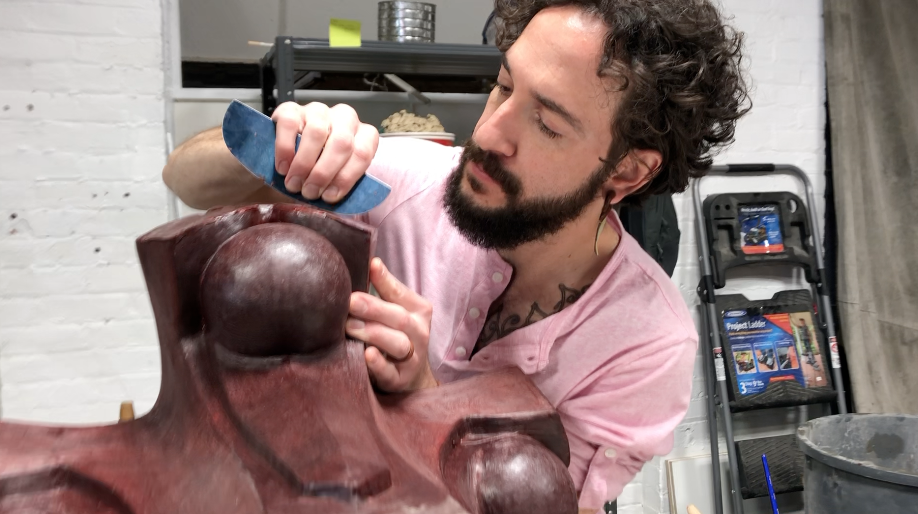
Payne will make those tooling marks in the wax later.
"I get lost in this texture and it becomes this algorithm of making a mark and reacting to it and then thinking about what the original sculptor would do and how these original forms are created," Payne said.
The finials they're working on will be nearly 4 feet tall, but dwarfed by the building as you look at it from Elm Street.
"So many things are being destroyed – whether that be a building, a process, a collection of tools even – they're disappearing," Sabatelli said.
He and Payne are even using some of those original tools to craft the designs and detail on the finials. From there, they will make molds of each design.
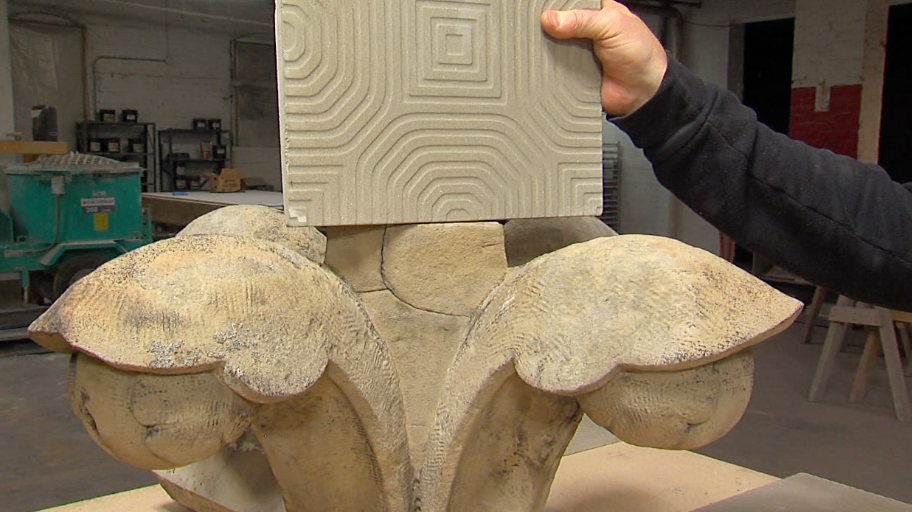
The final finials are glass fiber reinforced concrete, able to better weather the elements than the original sandstone. Arya took pains to color- and texture-match as best it could to the original finials and pieces that remained.
"If we don't match the exact color, the exact grain, the exact texture to the best of our abilities, than it's a loss," said Rose. "It's a duty for us. We have to pay attention to the historic preservation side of things."
Soaring notes
Installation started in mid-June and continued through the end of the month, with 10 finials installed on gables on the Elm Street side of the building.

SSRG crews worked around elements like storms and wind. On Tuesday, the heat was a major factor. It was so hot, install crews had just around two minutes to get the bases set before the epoxy hardened.
The final two pieces were the lyre on the datestone, with its spikes returned, and one final finial to the left of the rose window.
Thea Tjepkema and many of the Friends of Music Hall watched the work in the scorching sun.
"A lot of people didn't even know they were missing," she said. "But Hannaford chose High Victorian Gothic because it is a cathedral style of architecture and this, I like to say, is our cathedral to the arts."
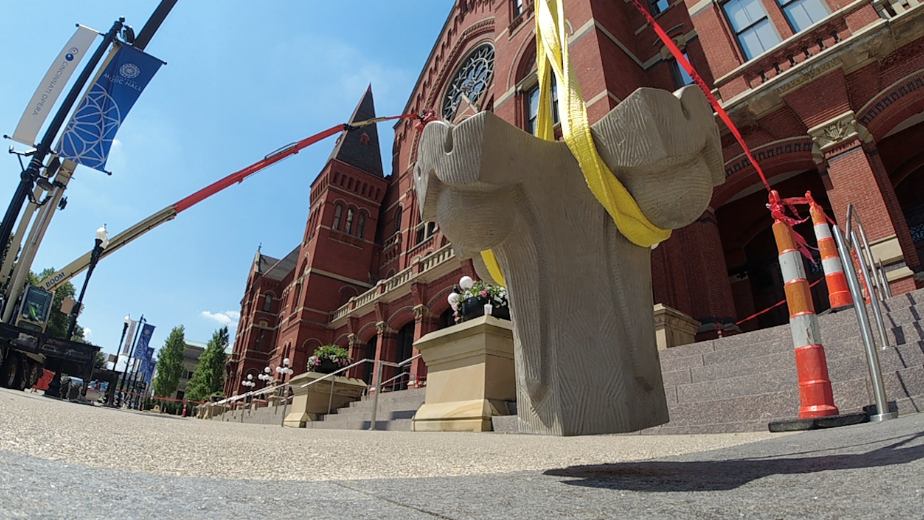
Tjepkema's attention now turns to other roof-line details – more finials, statues, and metal cresting work. A preservationist and historian's eye never misses the details.





